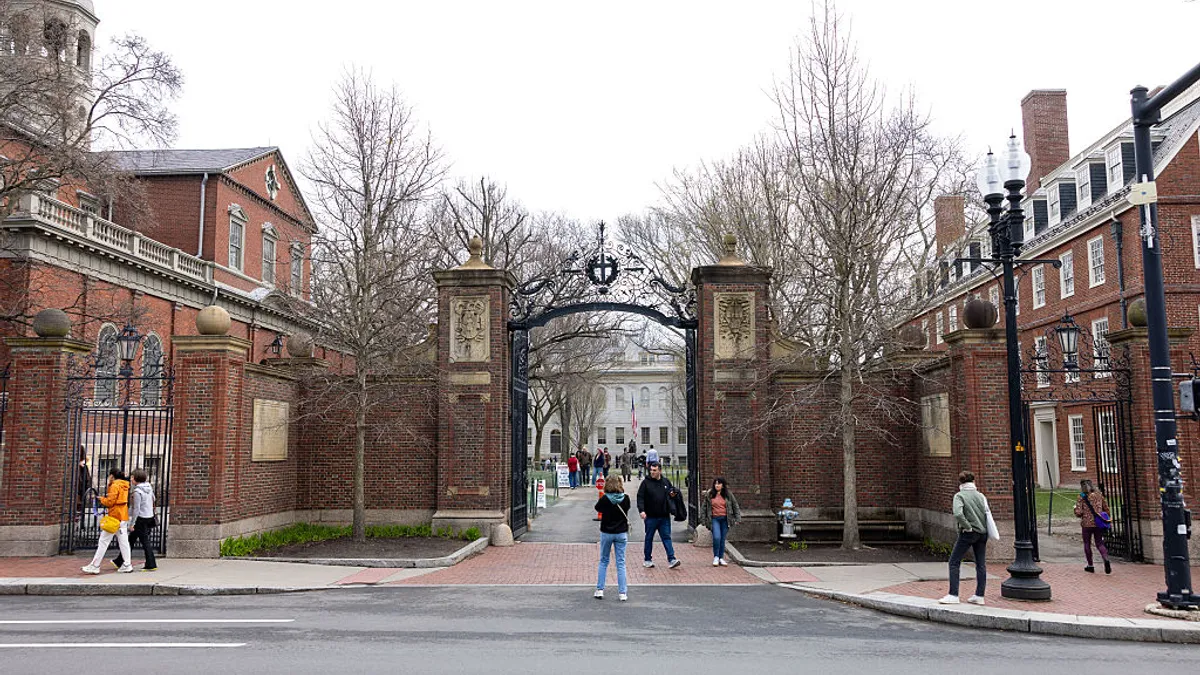Across the country, legislators are collaborating, compromising and negotiating on the details of their state budgets. The annual process can have significant repercussions for higher education: Public institutions, of course, get their yearly funding from their state. But private institutions also stand to benefit from state financial aid grants.
It’s still too early in the process to tell where all the chips will fall this year, but here are a few initial trends.
Tuition increases
Many states are experiencing large and sometimes even historic budget surpluses, said Tom Harnisch, vice president of government relations at the State Higher Education Executive Officers Association. But lawmakers in those places are often putting tax cuts ahead of investments in other areas.
“It’s been disappointing that many states are prioritizing tax cuts while underinvesting in higher education in this legislative session,” Harnisch said. “I fear that in a few years states are going to feel the pinch of these tax cuts. Budget deficits are going to develop, and higher education ultimately is going to pay the price.”
Some legislatures are considering implementing tuition increases at their public universities to help cover funding. In Wisconsin, for example, the governor’s proposal would leave public colleges with a $130 million shortfall. The state legislature froze tuition from 2013 to 2021 and the University of Wisconsin's board of regents has elected to continue the freeze since. Now, Republican lawmakers have proposed tying tuition to increases in inflation.
In Nebraska, the governor’s initial proposal called for 2% higher funding for the University of Nebraska. But the university president said the institution would need a percentage point more to avoid tuition hikes and significant spending cuts.
In New York, Gov. Kathy Hochul proposed a 3% tuition increase for students at the two state systems. State lawmakers have pushed back against the hike, while chancellors of the two systems have defended the governor’s approach.
Inflation cutting into growth
Even where states are increasing appropriations for higher education, some have said inflation will weaken the value of those new funds.
“This is a high-inflation environment, so a 1% or 2% increase for higher education is going to be a cut,” Harnisch said.
Colleges are also finding themselves squeezed by rising prices, as inflation drives up building and maintenance costs and faculty members demand higher pay.
Plus, some states have to contend with deficits caused by years of disinvestment that a single year of increases won’t solve.
For example, from fiscal years 2000 to 2020, funding for higher education in Illinois, adjusted for inflation, constituted a 46% cut, according to Ralph Martire, executive director of the Center for Budget and Tax Accountability. That amounts to a cut of $1.8 billion in real dollars, he said.
“Even if the state were to pass the budget Gov. [J.B.] Pritzker just put on the table and increase funding for higher ed by $219 million, which is a nice 9.7% nominal dollar increase, it doesn’t come anywhere near this $1.8 billion real cut,” Martire said.
Nationally, he said, the share of revenue at public institutions that comes from state appropriations has fallen about 11 percentage points, from 68% to 57%.
Pritzker has proposed additional funding for the state’s financial aid grant program, called the Monetary Award Program. Martire said that’s a good step, but inflation has still eroded the value of those grants to students. In 2000, the program's average grant covered 66% of tuition, he said. Today it covers 26%.
The governor "has proposed bumping it up by $100 million, and that’s great,” said Martire. “But that’s not going to come anywhere near making up for its loss of value,” he said.
Free college programs
A few states are proposing new free college programs or expansion of existing ones.
In Massachusetts, Gov. Maura Healey has requested $20 million for MassReconnect, a free college program for adults based on similarly named Michigan and Tennessee programs.
“The MassReconnect program, as well as the other investments in education and workforce development that we call for in our budget, will be transformative for hundreds of thousands of our residents,” Healey said in a statement last month.
In Michigan, Gov. Gretchen Whitmer is seeking $140 million to expand her state’s program, Michigan Reconnect, by lowering the eligibility age from 25 to 21.
Legislators in Maine are considering extending the state’s free community college program, which was originally meant to serve students whose education was impacted by the pandemic. It was initially set to end this year. Enrollment in the community college system is up 12% since the program started, Spectrum News reported.
New Mexico launched one of the most generous free college programs in the country last year. The Opportunity Scholarship covers enrollment at both two- and four-year colleges for state residents. Gov. Michelle Lujan Grisham has requested $157 million for the program, more than double its original funding in 2022.
But Ryan Morgan, CEO of the nonprofit Campaign for Free College Tuition, said that while all those steps are good, he’s been disheartened by what he sees as a lack of progress made by states this budget season.
“We went into the year with very high hopes that a lot of states would front-burner this issue,” Morgan said. “It hasn’t totally panned out.”
Though some governors have been talking up free college programs, they’re not all proposing them. Pritzker, in Illinois, called for free community college in his State of the State address. But when it came time for his budget proposal, he didn't include funding for such a program.
In Oregon, lawmakers in February considered cutting the state’s free college program entirely. Current efforts are focused on keeping the program but further limiting eligibility.
Other states that funded their programs with federal relief dollars, Morgan said, are going to have to consider how they'll continue once that money is gone.
“Historically the reason that free college programs don't often get passed in odd-numbered years is it’s a good issue, everyone loves it, it’s not incredibly expensive, but it's not what elected officials campaign on,” he said. Governors want to focus on their marquee issues, like reproductive rights, taxes and healthcare.
Still, Morgan said he is hopeful.
“We are optimistic that once you get past the campaign phase, the first 100 days phase, free college will be a relatively easy issue to look at and enact,” he said.




















